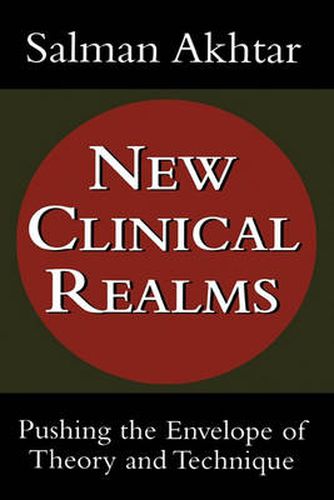Readings Newsletter
Become a Readings Member to make your shopping experience even easier.
Sign in or sign up for free!
You’re not far away from qualifying for FREE standard shipping within Australia
You’ve qualified for FREE standard shipping within Australia
The cart is loading…






Focusing on facets of mental functioning and psychopathology that remain largely unrecognized in psychiatric and psychoanalytic literature, this work raises intriguing questions about man’s subjective experience and his relationship with the world around him. What exactly is mental pain? How does forgiveness occur? What is the proper psychosocial role of a mentor? And, even more provocatively, what is man’s inner relationship with animals? How do inanimate objects sustain and facilitate psychic development throughout the life span? Do the physical objects in the clinical setting actually affect the patient’s mind? How does simplicity lead to contradiction and at what stage does contradiction yield to paradox? With the help of illuminating clinical vignettes and a solid anchor in the contemporary diversity of psychoanalytic theorizing, Akhtar’s book offers clinicians a rare glimpse into both the dark corners of psychopathology and the fresh arenas of healthy mental functioning. As a result, readers will find their capacity for empathy deepened and their therapeutic skills sharpened.
$9.00 standard shipping within Australia
FREE standard shipping within Australia for orders over $100.00
Express & International shipping calculated at checkout
Focusing on facets of mental functioning and psychopathology that remain largely unrecognized in psychiatric and psychoanalytic literature, this work raises intriguing questions about man’s subjective experience and his relationship with the world around him. What exactly is mental pain? How does forgiveness occur? What is the proper psychosocial role of a mentor? And, even more provocatively, what is man’s inner relationship with animals? How do inanimate objects sustain and facilitate psychic development throughout the life span? Do the physical objects in the clinical setting actually affect the patient’s mind? How does simplicity lead to contradiction and at what stage does contradiction yield to paradox? With the help of illuminating clinical vignettes and a solid anchor in the contemporary diversity of psychoanalytic theorizing, Akhtar’s book offers clinicians a rare glimpse into both the dark corners of psychopathology and the fresh arenas of healthy mental functioning. As a result, readers will find their capacity for empathy deepened and their therapeutic skills sharpened.